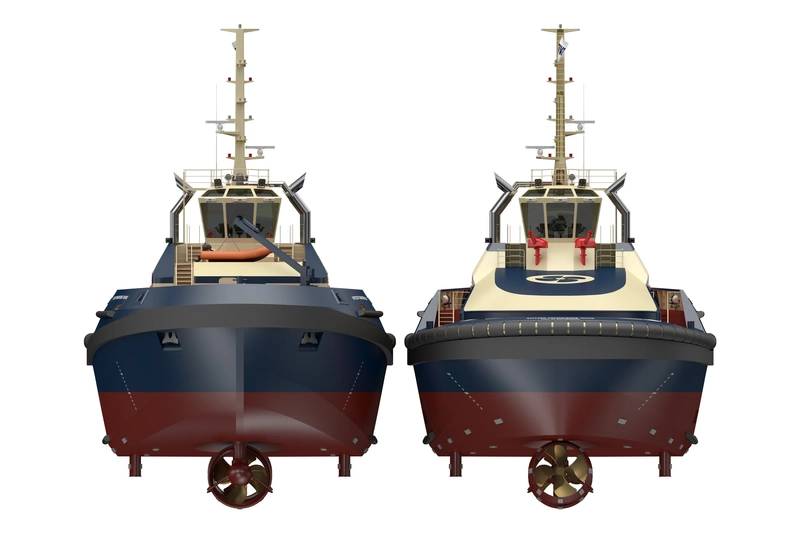Svitzer: Leading the Way in Global Tug Operations
Operating one of the world’s largest marine fleets of any kind, it is Svitzer’s local footprint that speaks volumes for its diverse and far-flung workforce and assets. Strengthened by a multi-national team, providing value in more than three dozen countries, Svitzer stands out every day.
On 30 April 2024, Svitzer was listed on Nasdaq Copenhagen (SVITZR) as a result of the previously announced separation from its former parent company, A.P. Møller – Mærsk A/S. Danish national Kasper Karlsen has been Global Chief Operating Officer of the Svitzer Group since December 2022. Prior to that, Karlsen held various senior leadership positions within Operations, performance improvement and business transformation while employed by Maersk Drilling dating back to 2007. He holds a Master of Science in Naval Architecture and Marine Engineering from Technical University of Denmark and has completed management and leadership programs at IMD Business School, the Massachusetts Institute of Technology – Sloan School of Management and DTU Executive School of Business.
Mr. Karlsen leverages all of those professional assets and experience, every day, as COO of the world’s largest and most diverse workboat operator. In late February, he sat down with MarineNews to provide a state-of-the company report, and a candid glimpse of what’s coming next.
By-the-numbers: 4,000 employees, 456 boats, 141 ports, 79 nationalities & 37 countries
Founded in 1833 as a salvage company, Svitzer has over time gone into harbor towage and then, just as deliberately, they exited the pure salvage business. “Today,” Karlsen says, “we focus on the core, which is harbor towage and terminal towage. Salvage is unpredictable. Waiting for the next disaster is not a business model that suits us.”
The Svitzer global footprint is varied, and deep. Nevertheless, Kasper Karlsen insists that all its different moving parts is the real strength of the firm. “It is definitely a challenge. We operate in many countries with many nationalities, many cultures. We hire local crew as much as at all possible.” He adds, “We also train local crew as much as possible and obviously that poses challenging challenges in actually making sure that the service delivered to our customers will remain at a consistently good level.” To do that, he says, means organizing Svitzer’s global operations to four regions.
“We cover the entire globe,” he says, continuing, “We are on all six continents and our corporate culture is very much about giving empowerment to the regions, but actually all the way up to the vessels because we believe that actually when it comes to towage and keeping each other safe and delivering to our customers, our people on the tugs are actually the experts. We also want to make sure that we can say that we have a ‘Svitzer DNA’ throughout the organization. That’s where my function comes into the picture, being responsible for our safety culture and systems.” This entails having a Svitzer standard on safety and training, that then allows local leaders to always use that as a measuring stick.
All of that, says Karlsen is obviously important from a safety and procedural point of view, but, he admits, “We also use our global footprint in many other ways. It’s an advantage to have a scale like we have and examples of where we use that is when it comes to engagement with key vendors – particularly for new buildings.” When it comes to the shipyards, engine and thruster OEM’s, the tug designers, the world’s largest towage company can use that leverage to impact quality and the pricing of newbuild tugs. That advantage also extends to after-sales service, especially when something goes wrong on the maintenance side.
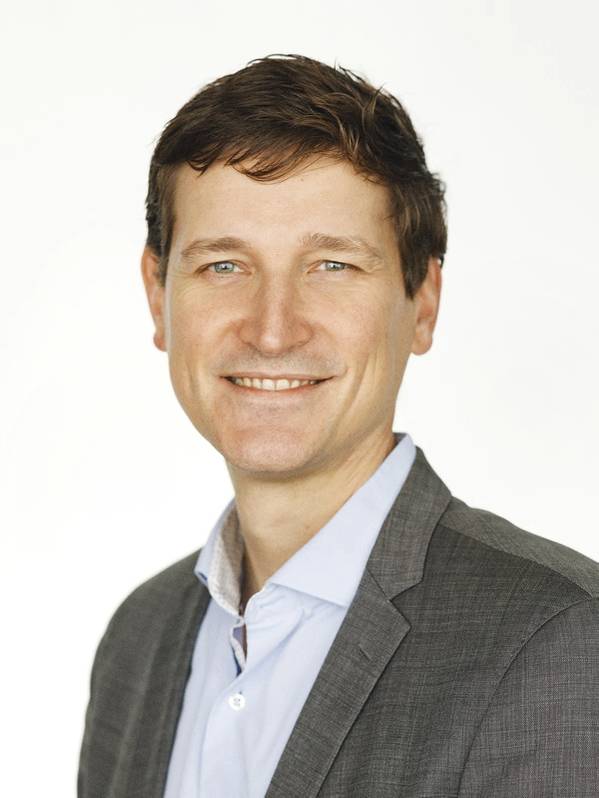
Svitzer took delivery of 11 vessels in 2024, and 23 in the year prior, with 13 more in the pipeline for 2025 and 2026. There is a definite pattern for these newbuildings. Kasper explains,
“We’re building for the markets we’re in. As an example, Brazil, because of the tax machine there, we build tugs for Brazil in Brazil; for Europe, the Middle East, Asia, we build a lot in Turkey. We are working closely with top tier yards in Turkey, but we also have a pipeline in China with a top tier yard there. Historically we build in other locations also, but those are the main locations we build in right now.”
That global reach and market leverage is especially important today, as operating margins are constantly being pressured. “Labor costs are up; inflation levels fluctuate, and the geopolitical climate is changing. So, there is always a price pressure and a cost focus that we need to take into account and, obviously, as the largest, we are trying to use that advantage to the best of our ability.”
Beyond that, Svitzer creates partnerships and works closely with the yards, equipment manufacturers and the tug designers. This Karlsen says, is an effort to lead and “move” barriers of the industry. He adds, “We have embarked on a proprietary tug design, the TRAnsverse tug, that we believe is a big innovative leap in the tug industry actually going forward.”
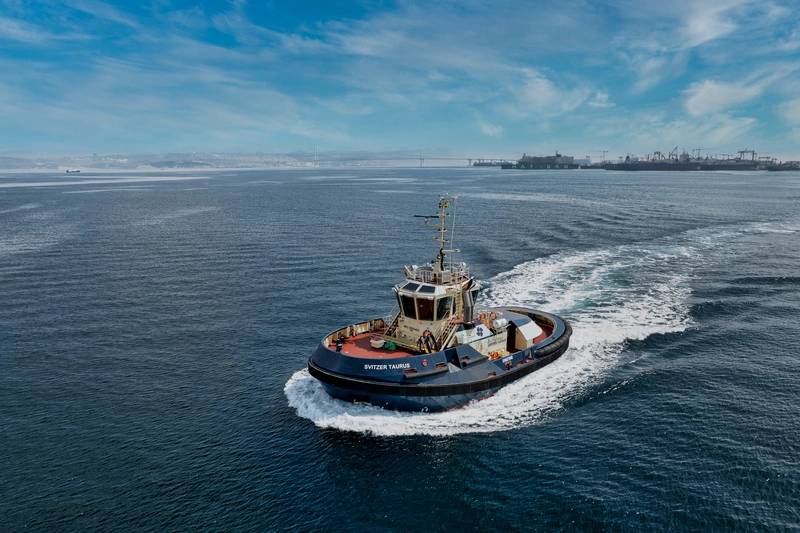
Decarbonization: Svitzer’s Deliberate, and Ambitious Plan
Today, the elusive goal of the “net-zero, decarbonized” Promised Land dominates the waterfront. When it comes to this moving target, Svitzer is anything but tone deaf. The first methanol hybrid fuel cell tugboat recently made news, and Svitzer was at the heart of that project. At the same time, Svitzer’s corporate efforts to “green” the planet are anything but new.
“First of all, we have already five years ago defined our decarbonization strategy and targets. We are aiming to reduce our direct emissions by 50% in 2030, compared to 2020 levels, so we’re halfway there and did actually achieve reductions of 24% in 2023. We are also aiming at becoming carbon-neutral in 2040. That’s quite an ambitious target that we’ve set for ourselves, especially considering that we have 450+ vessels, many of which will actually keep operating throughout until 2040 and beyond.”
How Svitzer approaches this challenge is telling. “We have looked at different future fuel solutions and also electrification. We’ve deselected ammonia, because of toxicity. We have deselected hydrogen for now, because of space constraints. Methanol, we have looked closer into and, yes, we are building a battery hybrid dual-fuel methanol tug, as we speak,” explains Karlsen, adding, “It’ll actually not be fitted with a fuel cell as first announced because we, for now, deselect the fuel cell technology as we did not find it mature enough for our desired application.”
Karlsen also points to the rapid development and evolution within the electrification area, but, with caveats. “It is becoming more and more evident that that electrification is a part of the end solution; not everywhere, but it will be a solution that is applicable many places and most places in the longer term. We started with the first battery hybrid tugs actually more than 10 years ago in Australia with small batteries. So, we have extensive experience with those. We just recently bought another battery hybrid tug that will be delivered this summer and then we have the next one which is the one with the dual-fuel methanol engines also. So, we are definitely embarking on the electrification journey and we are convinced that that’s the part of the end game.”
Karlsen admits, “It is very challenging. I would be lying if I said that it was easy getting our customers and their customers to pay a premium for green towage. But I’m also confident that we can move the needle further. Obviously, there are areas in our operations where it’s less mature and in other areas where it’s more mature. But just by the mere fact that we have around 450 vessels where many will be operating way beyond the target deadlines that we set, we will rely heavily on drop-in fuels to reach those targets and we rely heavily on finding commercial solutions to fund this, bearing in mind that green towage will assist our customers in decreasing their emissions in their value chain – their scope 3 emissions. We are also welcoming the right regulations helping the transition on the way.”
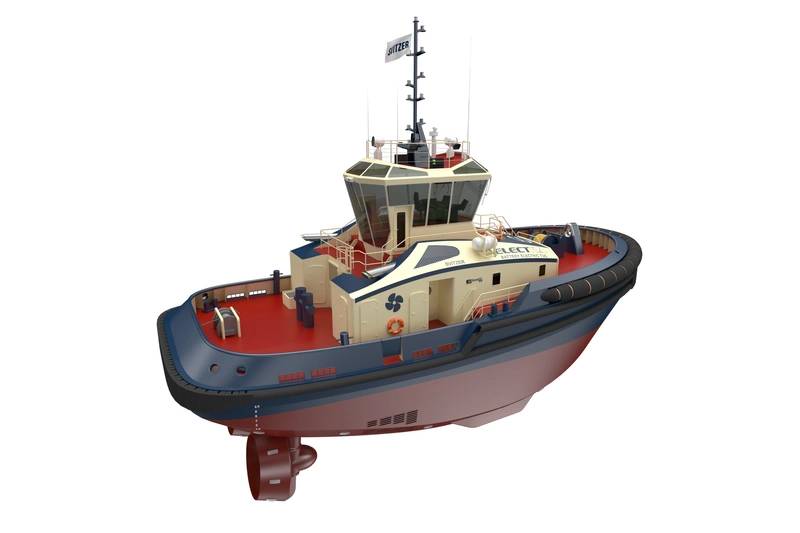
The Hour of Power: At Svitzer, ICE aren’t going away
If “decarbonization” has been the buzzword for marine vessels – whether it be blue or brown water – the next biggest thing has been the rapid advancement of battery technology. Lighter units, more payload (kW per battery), smaller packages packing more punch, all leading to the totally electric tugboat. That’s what naval architects are telling us.
That advice flies in the face of the time-honored maxim of “the hour of power,” or, more simply put, that very short period of time where a tugboat is required to exert maximum bollard pull. Conventional wisdom held that this required a diesel engine to achieve that dependable, maximum power. MarineNews asked the COO of the world’s largest and most far-flung tugboat operator: Do you provide service to your harbor clients using completely electric towboats? And, the answer was a resounding “no.”
Karlsen says simply, “No, we don’t. And, with the battery technology we have right now, this is not a likely scenario. That is also why when we say that we build battery electric tugs – and even some yards even call them full electric – it’ll always for us be a hybrid of some sort. And then, you dimension your battery according to your operating profile. But you always have to have a combustion engine such that you can say (a.) take me home or (b.) take me to peak load solution. You can then choose to run the combustion engine on biodiesel.
“But right now, fully electric is not a solution that’s viable for tugs in my mind. It will always be a hybrid where you can boost for peak, you can make sure that you can get home, and also for the ones where you have firefighting equipment on board, then you can run your firefighting pump on the diesel combustion engine.”
We pressed Karlsen. Never? He paused, responding, “Someday maybe, right? Because the technology is going so, so fast. You never know and for the right applications, for a small harbor tug, then I would not say that it can never happen, but right now we are not looking at a tugboat with only a battery solution. We simply don’t see that the technology is there and we’re not ready to run that risk. We will have to have a booster and a ‘take me home’ solution as well on board.”
That’s a risk-based solution. A prudent risk-based solution from the world’s largest towboat operator.
Svitzer believes that safety and dependability foster a more certain greener world. To that end, Scope 3 emission management is where Svitzer lays the keel of their environmental stewardship.
Scope 3 emissions, defined in layman’s terms, can be defined by an oil rig sitting in the U.S. Gulf of Mexico with four service boats attending to it. The carbon footprint for that vessel also includes the carbon footprint of the four boats that are hanging around doing what they’re supposed to be doing.
Karlsen nods enthusiastically, and says, ““That’s exactly the commercial solutions we work on. When we provide towage service to our customers, then we become part of their carbon footprint and what is called their Scope 3 emissions. Our solution is that they get at a modest premium, a green tug job. For example, we’ve had all of our fleet in the UK on HVO, so that generates a lot of carbon savings. Those carbon savings we can use in tug jobs provided elsewhere in the world where they want a green solution. That’s how it works. We’re not planting trees. We’re not offsetting as such, but we’re insetting from other parts of our own operations to benefit the big picture.”
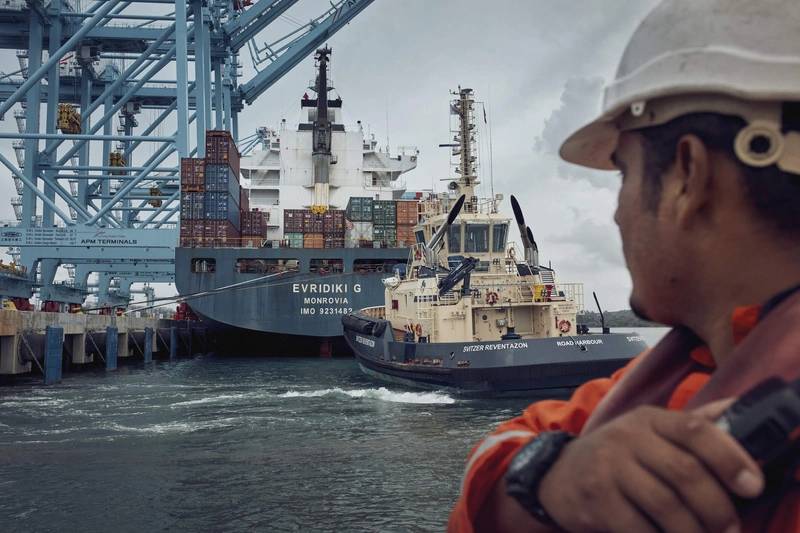
Karlsen continues, “I support regulations if it forces the right behavior and the right transition, but it is a fine balance. We need to make sure it doesn’t impose a lot of non-value-adding bureaucracy.” Going green doesn’t always create the other kind of green. Svitzer understands this.
Another aspect of Svitzer’s global decarbonization strategy is a digital system that actually monitors and manages our Masters such that we try to incentivize to have the right behavior when sailing the tugs. Karlsen describes an AIS-based system that measures the movements of tugs and gives equal rating to tug masters on how they operate. “We call it the “Aim for 8” campaign. Around eight knots when you’re mobilizing and demobilizing is a reasonable speed in order to actually get to the job, but also where the power curve is not too steep, so you don’t burn too much excess fuel, and you still have time to get to the job.”
So, we try to make a healthy competition out of that. And that has saved quite a lot of CO2, but also fuel. There’s a lot we can do when we talk about energy efficiency, just looking at behavior. The next thing is how do we work together with the pilots in ensuring that we also do the jobs, not only safe and efficient, but also fuel-efficient.
A garden variety example of this collaboration might be when the pilot’s got both spring lines out fore and aft and he still wants full power alongside the pier. Svitzer’s Karlsen asks: Do we really need to be wasting this fuel or pushing it out the stack? “That extra fuel is extra cost and, at some point, the customer needs to pay for that and it’s also their Scope 3 emissions. So, whatever we can do to make the job more efficient, will actually benefit the entire ecosystem and not the least, our customers.”
Incentivizing good behavior wasn’t invented by Svitzer, but they recognize its value in day-to-day operations. For Svitzer, Karlsen says that initially it involved a simple monthly report where anyone could see the scores and nobody wants to be in the bottom. “So, that’s just part of the competition. And then we had put up some challenges of ‘who’s most improved over the last three months’ and things like that. And then, what we did was to offer vouchers or something for crew welfare to get it off the ground. So, they can go out for dinner or they could buy a PlayStation for the boat or whatever they want to do.”
Karlsen says that this is now how operations should go and behaviors have changed. Eventually, this means not penalizing nor incentivizing, but it is what is expected as minimum performance and every tug and its crew have an impact on the energy transition.
Looking Ahead
In 2023, Svitzer reduced the CO2 intensity of its global fleet by 24% – primarily through the conversion of tugs from marine gas oil to low-carbon fuels and through its global ‘Aim for 8’ behavioral change initiative which was expanded from Europe and Australia into its AMEA and Americas regions.
But, fleet management at Svitzer goes far beyond simple engine and fuel choices. With some fleet tugs, and others not-so-much, Svitzer’s diverse asset base sometimes requires manual input for performance data, as opposed to digital automation. Whatever the source, insists Karlsen, the most important decisions involve how that data is used. “What’s important for us is reliability. Are we responsive when agents or customers calls? Are we able to provide the tugs? Will the tugs be there on the spot at the right time as requested? And are they performing the job safely and efficiently? Those are the main things.”
Already well ahead of its ambitious decarbonization goals, Svitzer is unwilling to compromise safety and efficiency along the way. Leaving no stone unturned when it comes to searching out the best ways to green its carbon footprint, one size does not fit all for the world’s largest tugboat operator. When you leverage the knowhow and diverse input from 4,000 employees hailing from 79 different companies, operating 456 boats ports in 37 countries, its not hard to see why.
